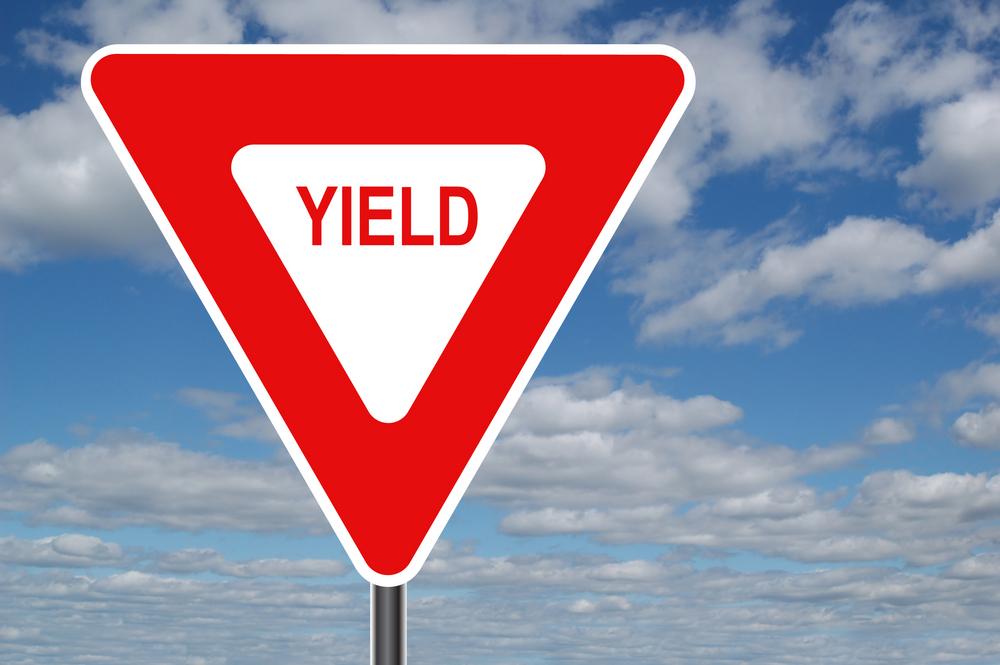For many drivers, the idea of the right-of-way can simply be a reference to the requirement that one needs to obey all traffic laws, including those at a controlled intersection. What yielding the right of way at a traffic signal and other situations in Texas is the focus of this article.

Understanding what the obligation to yield means can help keep you and your family safe. One of the most common causes of car accidents that personal injury attorneys hear is the other driver’s failure to yield.
What Does Yielding the Right of Way Mean in Texas?
However, yielding to the right-of-way in Texas does not just refer to instances at a controlled intersection and every aspect of driving, whether on a rural road facing a left turn, a dead-end or merging onto a multi-lane highway.
There are two pivotal reasons why you should understand how one should yield when it comes to who has the right of way.
- Traffic tickets can be given to those who violate traffic laws regarding right-of-way, even at an intersection with no signals, yield signs, or stop signs. In addition, tickets can be handed down to drivers who do not follow proper yielding to the right-of-way protocol at inoperable stoplights or four stop signs facing each other.
- Failure to yield to the right-of-way can cause potential traffic accidents that will range in their level of severity. Some accidents can result in a minor fender bender. In contrast, a more serious truck accident involving a failure to yield can result in a prolonged stay at the hospital and even wrongful death.
Thus, one must understand when one has the right-of-way and when one should yield to the other cars and drivers on the road instead. Failing to yield the ROW is one of the main causes of car wrecks.
Right of Way Laws in Texas
Texas has its own statutes about the right-of-way. Texas right-of-way law is set out in Section 545.151 of the Texas Transportation Code.
Yield Signs
Obviously, if you have a yield sign, you must yield to oncoming traffic. Many dangerous intersections and entry and exit ramps are marked by a yield sign.
Right-Of-Way at Intersections
In Texas, one must yield to vehicles already in the intersection at an uncontrolled intersection.
If both vehicles arrive at a traffic light or intersection at the same time, the car on the right has the right-of-way.
When you see a stop sign and are turning right, continuing traffic has the right-of-way.
When turning left, you must yield to oncoming traffic.
The Emergency Vehicles Exception
Always yield to emergency vehicles with flashing lights and sirens on. If a police car, ambulance, or fire truck approaches, yield to them and safely get out of the way.
Tips For Determining Right of Way in Houston
To determine who has the right-of-way over other vehicles when driving, consider the following guidelines to understand the rules of the road better:
- Always obey the given visual signal when in a controlled intersection with stop signs or traffic signs!
- In intersections that are not controlled, yield to any cars already at the intersection. If you and another vehicle arrive at the intersection simultaneously, yield to the car on the right. (see illustration above).
- When approaching an intersection with multiple-lane roads, such as a one-lane, two-lane, or lane that intersects with a larger road, all drivers on the smaller road must yield to cars that are on the larger or multi-lane road.
- When approaching a T-intersection, where one road ends in a dead-through street, the driver on the dead-end road must yield to traffic on the other, normal-sided street.
- When approaching a highway exit ramp, the driver on the access road must yield to cars on the exit ramp. Regardless of whether the traffic leaving the freeway will merge into a separate lane, one must still yield to cars on the exit ramp.
- The right-of-way must also be given to pedestrians in a crosswalk, persons using a seeing-eye guide dog, and persons using a white cane, whether or not it has a white tip.
Remember, you should never assume that the other driver or pedestrian will utilize the rules of the road! Just because eye contact is made between two vehicles does not mean the other individual will give you the right-of-way.
Be safe, slow down, assume the worst, and if you are a friendly driver, sometimes letting the other car go is the safe approach, even if it is your right to go first.
Thus, along with ensuring that you follow these guidelines, you must also use appropriate caution when necessary!
Always remember it is better to yield the right and, drive friendly and arrive safely than to be right and be in a car accident that was not your fault!
Right of Way FAQ’s
How should drivers yield the right of way when approaching a highway exit ramp?
When approaching a highway exit ramp, the driver on the access road must yield to cars on the exit ramp.
How should drivers yield the right of way when arriving at an intersection simultaneously with another vehicle?
If you and another vehicle arrive at the intersection simultaneously, yield to the car on the right.
How should drivers yield the right of way at intersections that are not controlled?
In intersections that are not controlled, drivers should yield to any cars already at the intersection.
How should drivers yield the right of way at T-intersections?
At a T-intersection, where one road meets a dead-end at its junction with another road (where you can turn right or left but not go straight), the driver on the dead-end road must yield to all cross-traffic traveling on the through street.
How should drivers yield the right of way at intersections with multiple-lane roads?
At intersections with multiple-lane roads, drivers on the smaller road must yield to those on the larger road.
Right of Way Laws and a Car Accident Injury Case
One of the key elements of a successful car accident claim is proving who was at fault. The injured person who brings a case is required to prove fault. Violating a law or statute can go a long way to proving liability.
If you are injured in a car accident in Houston, right-of-way laws can assist in establishing who was at fault for the crash. And if you can prove fault by violating a statute or otherwise, it can help you get the compensation you deserve.
Getting an attorney with experience in car accident cases can help your mission for fair compensation.
Get an Attorney for Your Accident Claim
An experienced attorney can advance your interest through settlement or a lawsuit for your case. If the crash was not your fault, consider at least talking with a car accident attorney about your claim. Baumgartner Law Firm offers a FREE, no-obligation consultation about your rights and options.

Contact the Car Accident Lawyer in Houston at Baumgartner Law Firm for Help
If you were hurt in a Houston car accident, call (281) 587-1111 for a no-obligation consultation with an experienced car accident lawyer in Houston.
NO CHARGES FOR AN INJURY ACCIDENT CONSULTATION!
Call Baumgartner Law Firm Personal Injury Lawyers at (281) 587-1111.
Related Posts:
How a Traffic Ticker Affects a Personal Injury Case
Most Dangerous Roads in Houston
Determining Fault in Texas Car Accidents
Admissibility of Police Officer Opinions in a Crash Report
Is Texas a “No-Fault State for Car Wrecks?
What are my Rights After Getting Hurt in an Accident with a Commercial Vehicle?
